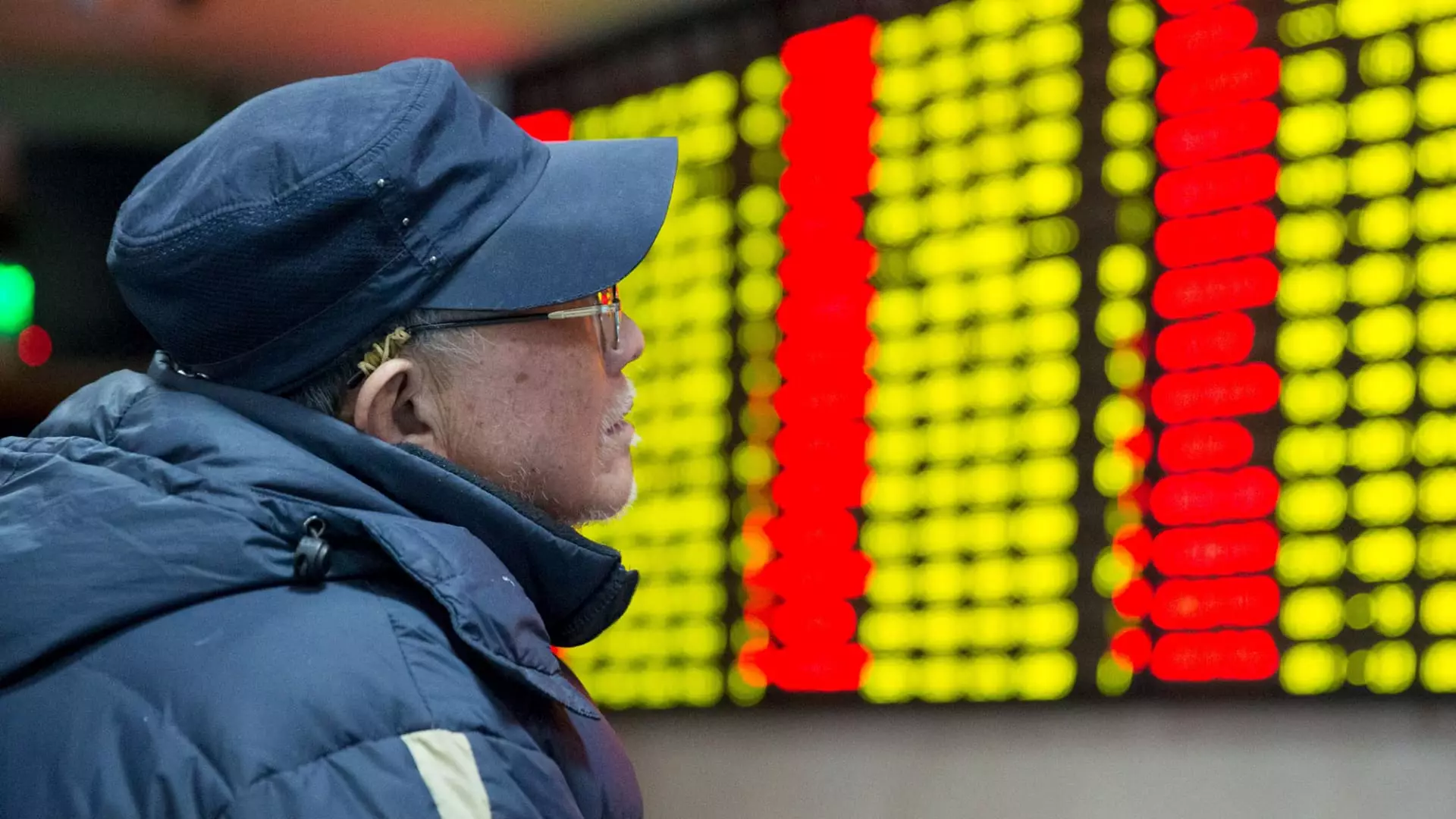China’s stock market has seen a remarkable resurgence recently, an event that prompts a deeper examination of the economic strategies put forth by the government and their subsequent impact on investor sentiment. The CSI 300 index, representative of Shanghai and Shenzhen markets, jumped over 15% in a single week—its best performance since 2008—indicating a seismic shift in market behavior. At the beginning of this year, the same index languished at six-year lows, a situation that few could have predicted just a few months ago.
Recent announcements from Chinese authorities aiming to bolster the economy have significantly changed the outlook for investors. The insights from Wendy Liu, JPMorgan’s chief China equity strategist, stress that quality stocks will likely recover sooner than broad market indices. This assertion highlights a pivotal investment strategy focusing on quality over quantity, particularly as the economic landscape remains fraught with uncertainty.
However, while these government measures appear to have triggered a market rally, the actual efficacy of such measures is yet to be clearly established. Strategists are urging caution and recommend focusing on selected oversold stocks to capture short-term gains. Stocks like Tsingtao, Miniso, and Zhejiang Dingli are highlighted for their potential, suggesting that discerning investors are looking for opportunities in this chaotic environment.
As sentiments towards Chinese equities shift, hedge fund giants like David Tepper are beginning to show enthusiasm for investing in the region again. Tepper’s logic hinges on the perceived bargain of Chinese stocks—traits like low price-to-earnings ratios paired with promising growth rates create a compelling case for investment. This emerging trend illustrates a broader acceptance among institutional investors of the potential rebound in Chinese markets.
The notion of internal stimulus, emphasized by Tepper, functions as a counter-narrative to fears surrounding U.S.-China relations. The focus on domestic growth rather than reliance on external factors is becoming increasingly relevant as investors seek stable growth avenues amid geopolitical uncertainties.
Analysts from Bernstein have identified two specific companies—Tal Education and Seres—exhibiting a strong earnings momentum over six months. They focus not only on current undervaluation but also on future earnings potential. Such sector-specific insights point to an evolving narrative where industries like education and electric vehicles are seen as key beneficiaries of an economic revival.
The recent rate cuts announced by the People’s Bank of China (PBOC) also contributed to a renewed sense of optimism among short-term traders. This dovish monetary policy is designed to stabilize the real estate sector and stimulate consumer spending—both critical components of a robust economic framework. The market’s response to these announcements was immediate and profound, with investors rapidly adjusting their portfolios to capitalize on the newfound bullish sentiment.
Despite the optimism, it is essential to recognize the fragility of this newfound enthusiasm. Investor behavior continues to be heavily influenced by policy changes and economic indicators. Many international investors remain apprehensive, having previously reduced exposure due to issues related to high debt levels and the real estate slump. This recent uptick in interest aligns with a broader trend of reallocating investments into emerging markets, particularly China, as the region’s economic prospects brighten.
As retail investors are predominant in mainland China’s A-share market, their trading patterns are also crucial indicators of sentiment. Observations from finance experts underscore that initial bursts of recovery followed by policy support often characterize market behaviors. As such, the current rally could lead to volatile corrections if the underlying economic conditions do not stabilize.
Future Consultations and Market Volatility
The marketplace’s immediate outlook remains one of ambiguity, especially as China goes into a holiday period where trading is suspended. Even as investors express optimism regarding recent market movements, the uncertainty surrounding concrete fiscal policies calls for strategic caution. The likelihood of continued fluctuations remains high, particularly for those stocks witnessing rapid growth after prolonged periods of stagnation.
While China’s stock market shows signs of re-emerging vigor bolstered by strategic government interventions, it remains influenced by a complex web of domestic economic realities and sentiments from international investors. Navigating this evolving landscape will demand careful analysis and strategic foresight as we examine the potential ramifications on global financial markets moving forward.

